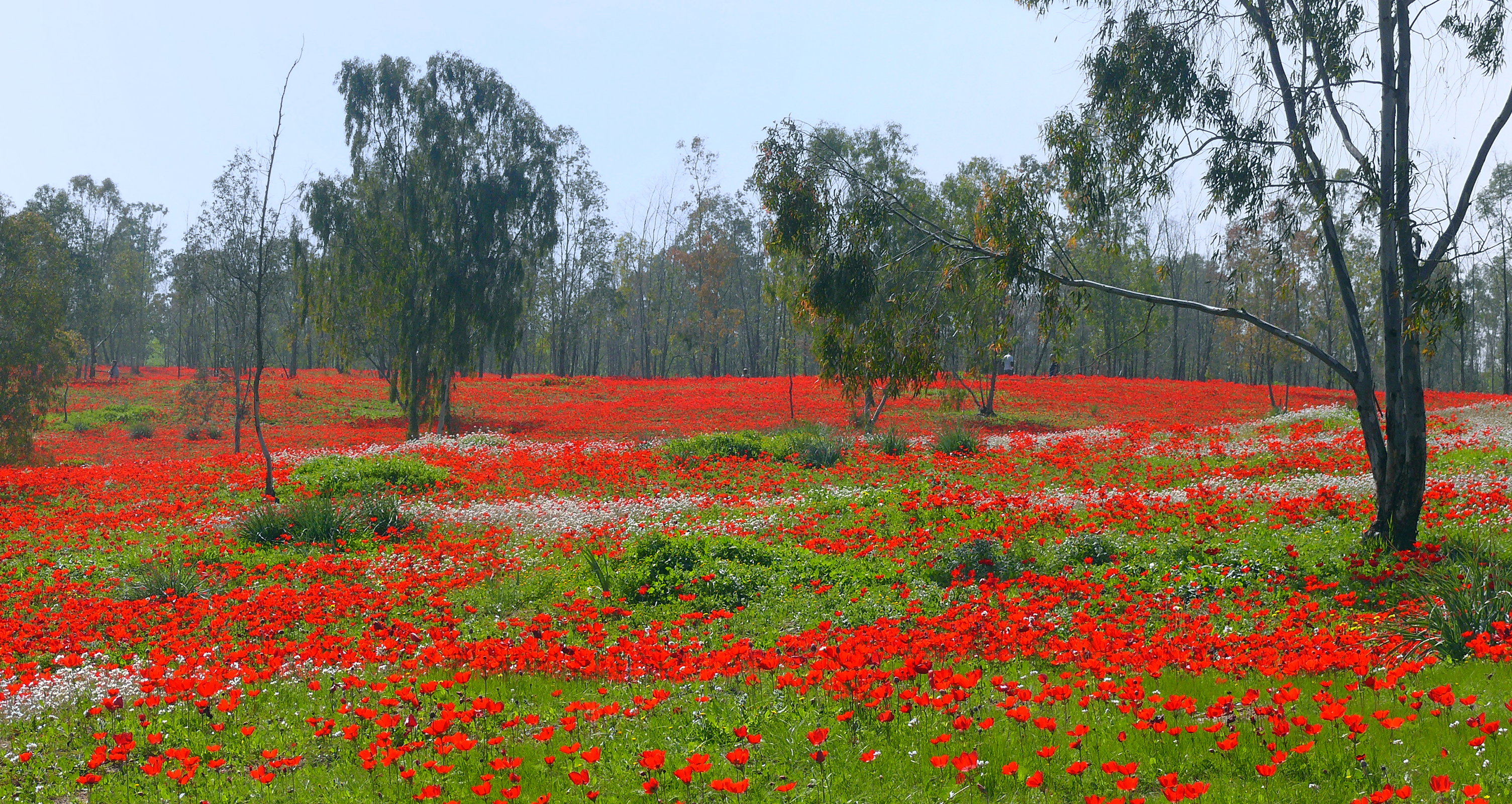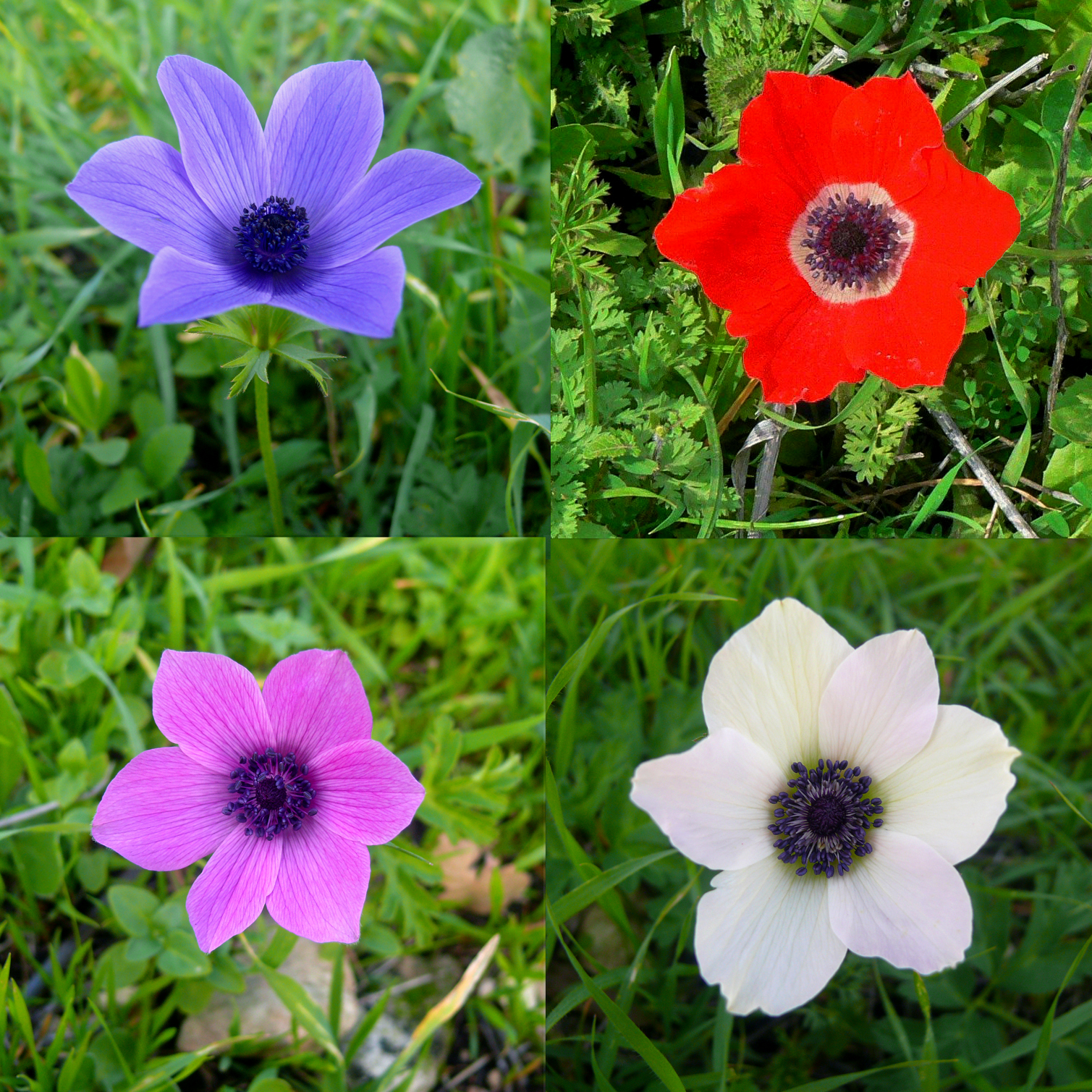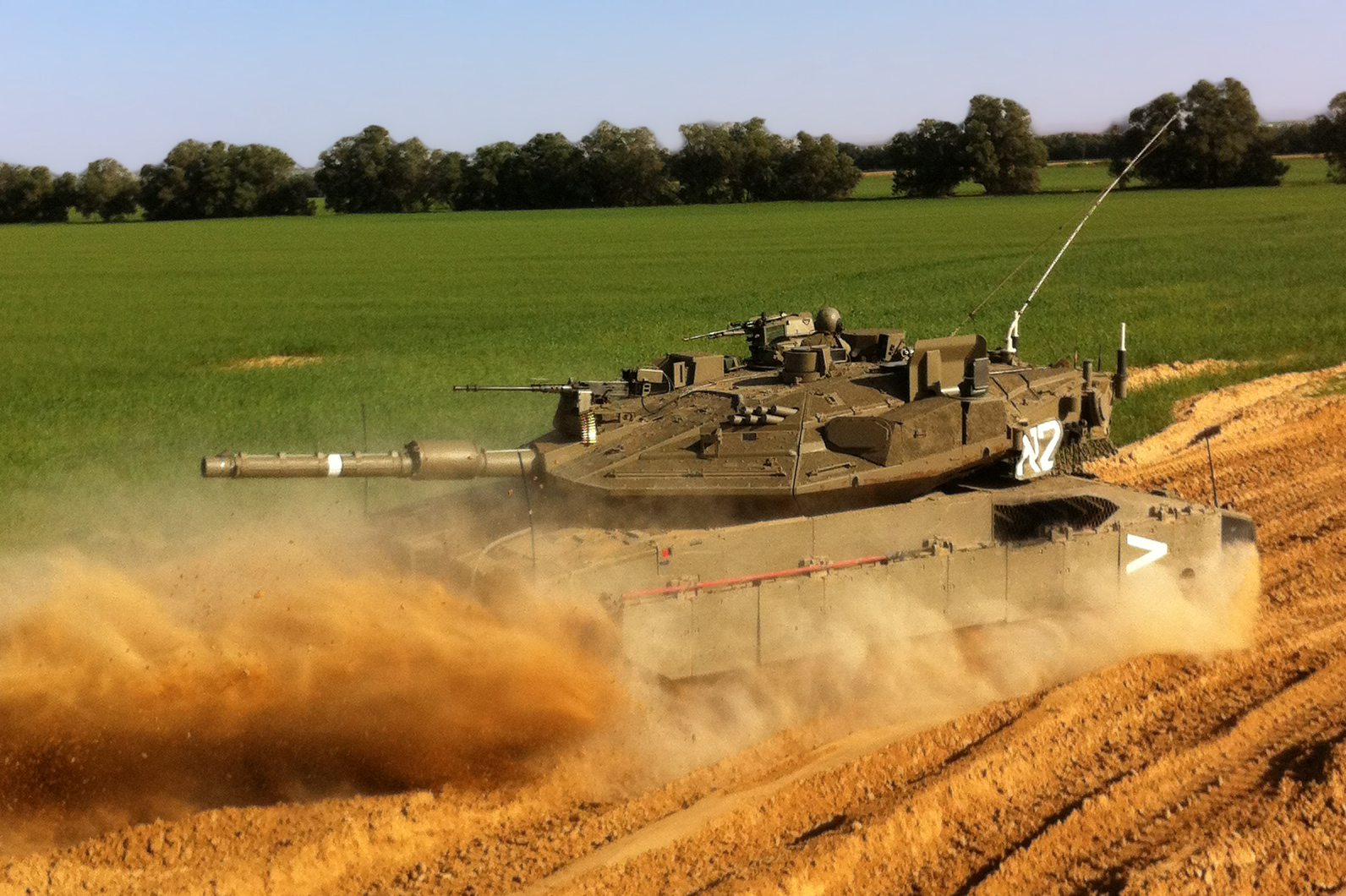|
Shokeda
Shokeda ( he, שׁוֹקֵדָה) is a religious moshav in southern Israel. Located approximately six kilometres west of Netivot and covering 6,000 dunams, it falls under the jurisdiction of Sdot Negev Regional Council. In it had a population of . History The village was established in 1957 by the Jewish Agency for Moroccan Jewish immigrants. They arrived in two groups, and the original aim was to found two settlements; Shokeda and Tzumha. However, only one of them was established. In the late winter months, Shokeda becomes a tourist attraction due to the multitude of wild red poppy flowers that carpet the landscape. See also *Wildlife of Israel The wildlife of Israel includes the flora and fauna of Israel, which is extremely diverse due to the country's location between the temperate and the tropical zones, bordering the Mediterranean Sea in the west and the desert in the east. Species ... References External links Shokeda Eco-Farm {{Sdot Negev Regional Council Moshav ... [...More Info...] [...Related Items...] OR: [Wikipedia] [Google] [Baidu] |
Sdot Negev Regional Council
Sdot Negev Regional Council ( he, מועצה אזורית שדות נגב, ''Mo'atza Azorit Sdot Negev'', ''lit.'' Negev Fields Regional Council), formerly Azata Regional Council ( he, מועצה אזורית עזתה, ''Mo'atza Azorit Azata'') is a regional council in the northwestern Negev desert in the Southern District of Israel. History The Sdot Negev region council was established in 1951 by the Religious Zionist HaPoel HaMizrahi settlement movement. The council encompasses 16 communities: two kibbutzim, 12 moshavim and two community settlements. Despite frequent rocket attacks from the nearby Gaza Strip, the population of the Sdot Negev region has increased 55 percent in 2006–2012. Residents have cited the educational system, atmosphere and rural lifestyle as incentives for moving to this part of the Negev. List of communities *Kibbutzim: Alumim · Sa'ad *Moshavim: Beit HaGadi · Givolim · Kfar Maimon · Mlilot · Sharsheret · Shibolim · Shokeda · Shuva · ... [...More Info...] [...Related Items...] OR: [Wikipedia] [Google] [Baidu] |
Anemone Coronaria
''Anemone coronaria'', the poppy anemone, Spanish marigold, or windflower, is a species of flowering plant in the buttercup family Ranunculaceae, native to the Mediterranean region. Description ''Anemone coronaria'' is a herbaceous perennial tuberous plant growing to 20–40 cm tall, rarely to 60 cm (0.75–1.50 feet), spreading to 15–23 cm (0.50 to 0.75 feet), with a basal rosette of a few leaves, the leaves with three leaflets, each leaflet deeply lobed. The flowers which bloom from April to June are borne singly on a tall stem with a whorl of small leaves just below the flower; the flower is 3–8 cm diameter, with 5–8 red (but may be white or blue) showy petal-like tepals and a black centre. The pollen is dry, has an unsculpted exine, is less than 40 nm in diameter, and is usually deposited within 1.5 m of its source. This central mound consists of tightly packed pistils in the centre, with a crown-like ring of stamens surrounding t ... [...More Info...] [...Related Items...] OR: [Wikipedia] [Google] [Baidu] |
Wildlife Of Israel
The wildlife of Israel includes the flora and fauna of Israel, which is extremely diverse due to the country's location between the temperate and the tropical zones, bordering the Mediterranean Sea in the west and the desert in the east. Species such as the Syrian brown bear and the Arabian ostrich have become extinct in Israel because of their loss of habitat. As of May 2007, 190 nature reserves have been established in Israel. Fauna Mammals Israel contains a variety of mammals due to its geographical and climatic diversity. For many of the mammals, Israel is the border of their territory. The territories of species which originate in the Palearctic generally stop at the deserts and those who originate from the African deserts usually stop at the Mediterranean coasts. Most of the mammals in Israel are of a Palearctic origin and about a tenth of the mammals are endemic to its general area. The Land of Israel once contained a variety of mammals, however in recent times ... [...More Info...] [...Related Items...] OR: [Wikipedia] [Google] [Baidu] |
Gaza Envelope
The Gaza envelope ( he, עוטף עזה, ''Otef Aza'') is the populated areas of Israel that are within of the Gaza Strip border and are therefore within range of mortar shells and Qassam rockets launched from the Gaza Strip. The region is populated by 70,000 Israeli citizens according to the Israeli ministry of internal affairs. History Following the Israeli withdrawal from the Gaza Strip in 2005, there was an increase in cross-border shelling and rocket attacks into Israel. Data collected by the Israeli Security Agency showed an increase in shelling from 401 shells in 2005 rising year-on-year to 2,048 in 2008 before falling back to 569 in 2009. In response to the increase in shelling, in 2007 the Knesset passed the "Assistance to Sderot and the Western Negev (Temporary Provision) Law, 2007", which recognized these communities (and additional communities in the area designated by the Minister of Finance's order) as "Confrontation-line Communities" and gave them special privile ... [...More Info...] [...Related Items...] OR: [Wikipedia] [Google] [Baidu] |
Populated Places In Southern District (Israel)
Population typically refers to the number of people in a single area, whether it be a city or town, region, country, continent, or the world. Governments typically quantify the size of the resident population within their jurisdiction using a census, a process of collecting, analysing, compiling, and publishing data regarding a population. Perspectives of various disciplines Social sciences In sociology and population geography, population refers to a group of human beings with some predefined criterion in common, such as location, race, ethnicity, nationality, or religion. Demography is a social science which entails the statistical study of populations. Ecology In ecology, a population is a group of organisms of the same species who inhabit the same particular geographical area and are capable of interbreeding. The area of a sexual population is the area where inter-breeding is possible between any pair within the area and more probable than cross-breeding with ... [...More Info...] [...Related Items...] OR: [Wikipedia] [Google] [Baidu] |
Populated Places Established In 1957
Population typically refers to the number of people in a single area, whether it be a city or town, region, country, continent, or the world. Governments typically quantify the size of the resident population within their jurisdiction using a census, a process of collecting, analysing, compiling, and publishing data regarding a population. Perspectives of various disciplines Social sciences In sociology and population geography, population refers to a group of human beings with some predefined criterion in common, such as location, race, ethnicity, nationality, or religion. Demography is a social science which entails the statistical study of populations. Ecology In ecology, a population is a group of organisms of the same species who inhabit the same particular geographical area and are capable of interbreeding. The area of a sexual population is the area where inter-breeding is possible between any pair within the area and more probable than cr ... [...More Info...] [...Related Items...] OR: [Wikipedia] [Google] [Baidu] |
Religious Israeli Communities
Religion is usually defined as a social- cultural system of designated behaviors and practices, morals, beliefs, worldviews, texts, sanctified places, prophecies, ethics, or organizations, that generally relates humanity to supernatural, transcendental, and spiritual elements; however, there is no scholarly consensus over what precisely constitutes a religion. Different religions may or may not contain various elements ranging from the divine, sacred things, faith,Tillich, P. (1957) ''Dynamics of faith''. Harper Perennial; (p. 1). a supernatural being or supernatural beings or "some sort of ultimacy and transcendence that will provide norms and power for the rest of life". Religious practices may include rituals, sermons, commemoration or veneration (of deities or saints), sacrifices, festivals, feasts, trances, initiations, funerary services, matrimonial services, meditation, prayer, music, art, dance, public service, or other aspects of human culture. Religio ... [...More Info...] [...Related Items...] OR: [Wikipedia] [Google] [Baidu] |
Moshavim
A moshav ( he, מוֹשָׁב, plural ', lit. ''settlement, village'') is a type of Israeli town or settlement, in particular a type of cooperative agricultural community of individual farms pioneered by the Labour Zionists between 1904 and 1914, during what is known as the second wave of ''aliyah''. A resident or a member of a moshav can be called a "moshavnik" (). The moshavim are similar to kibbutzim with an emphasis on community labour. They were designed as part of the Zionist state-building programme following the green revolution Yishuv ("settlement") in the British Mandate of Palestine during the early 20th century, but in contrast to the collective farming kibbutzim, farms in a moshav tended to be individually owned but of fixed and equal size. Workers produced crops and other goods on their properties through individual or pooled labour with the profit and foodstuffs going to provide for themselves. Moshavim are governed by an elected council ( he, ועד, ''va'a ... [...More Info...] [...Related Items...] OR: [Wikipedia] [Google] [Baidu] |
Jewish Agency For Israel
The Jewish Agency for Israel ( he, הסוכנות היהודית לארץ ישראל, translit=HaSochnut HaYehudit L'Eretz Yisra'el) formerly known as The Jewish Agency for Palestine, is the largest Jewish non-profit organization in the world. It was established in 1929 as the operative branch of the World Zionist Organization (WZO). The stated mission of the Agency is to "ensure that every Jewish person feels an unbreakable bond to one another and to Israel no matter where they live in the world, so that they can continue to play their critical role in our ongoing Jewish story." It is best-known as the primary organization fostering the immigration of Jews in diaspora to the Land of Israel (known as ''aliyah'') and overseeing their integration with the State of Israel. Since 1948, the Jewish Agency has brought 3 million immigrants to Israel, and offers them transitional housing in "absorption centers" throughout the country. The Jewish Agency played a central role in the f ... [...More Info...] [...Related Items...] OR: [Wikipedia] [Google] [Baidu] |
Moroccan Jewish
Moroccan Jews ( ar, اليهود المغاربة, al-Yahūd al-Maghāriba he, יהודים מרוקאים, Yehudim Maroka'im) are Jews who live in or are from Morocco. Moroccan Jews constitute an ancient community dating to Roman times. Jews began immigrating to the region as early as 70 CE. They were later met by a second wave of migrants from the Iberian peninsula in the period which immediately preceded and followed the issuing of the 1492 Alhambra Decree, when Jews were expelled from Spain, and soon afterward, from Portugal. This second wave of immigrants changed Moroccan Jewry, which largely embraced the Andalusian Sephardic liturgy, to switch to a mostly Sephardic identity. The immigration of Moroccan Jews to Israel has occurred throughout the centuries of Jewish history. Moroccan Jews built the first self-made neighborhood outside the walls of Jerusalem ( Mahane Israel) in 1867, as well as the first modern neighborhoods in Tel Aviv, Haifa and Tiberias. At its peak in ... [...More Info...] [...Related Items...] OR: [Wikipedia] [Google] [Baidu] |
Dunam
A dunam (Ottoman Turkish, Arabic: ; tr, dönüm; he, דונם), also known as a donum or dunum and as the old, Turkish, or Ottoman stremma, was the Ottoman unit of area equivalent to the Greek stremma or English acre, representing the amount of land that could be ploughed by a team of oxen in a day. The legal definition was "forty standard paces in length and breadth", but its actual area varied considerably from place to place, from a little more than in Ottoman Palestine to around in Iraq.Λεξικό της κοινής Νεοελληνικής (Dictionary of Modern Greek), Ινστιτούτο Νεοελληνικών Σπουδών, Θεσσαλονίκη, 1998. The unit is still in use in many areas previously ruled by the Ottomans, although the new or metric dunam has been redefined as exactly one decare (), which is 1/10 hectare (1/10 × ), like the modern Greek royal stremma. History The name dönüm, from the Ottoman Turkish ''dönmek'' (, "to turn"), a ... [...More Info...] [...Related Items...] OR: [Wikipedia] [Google] [Baidu] |








